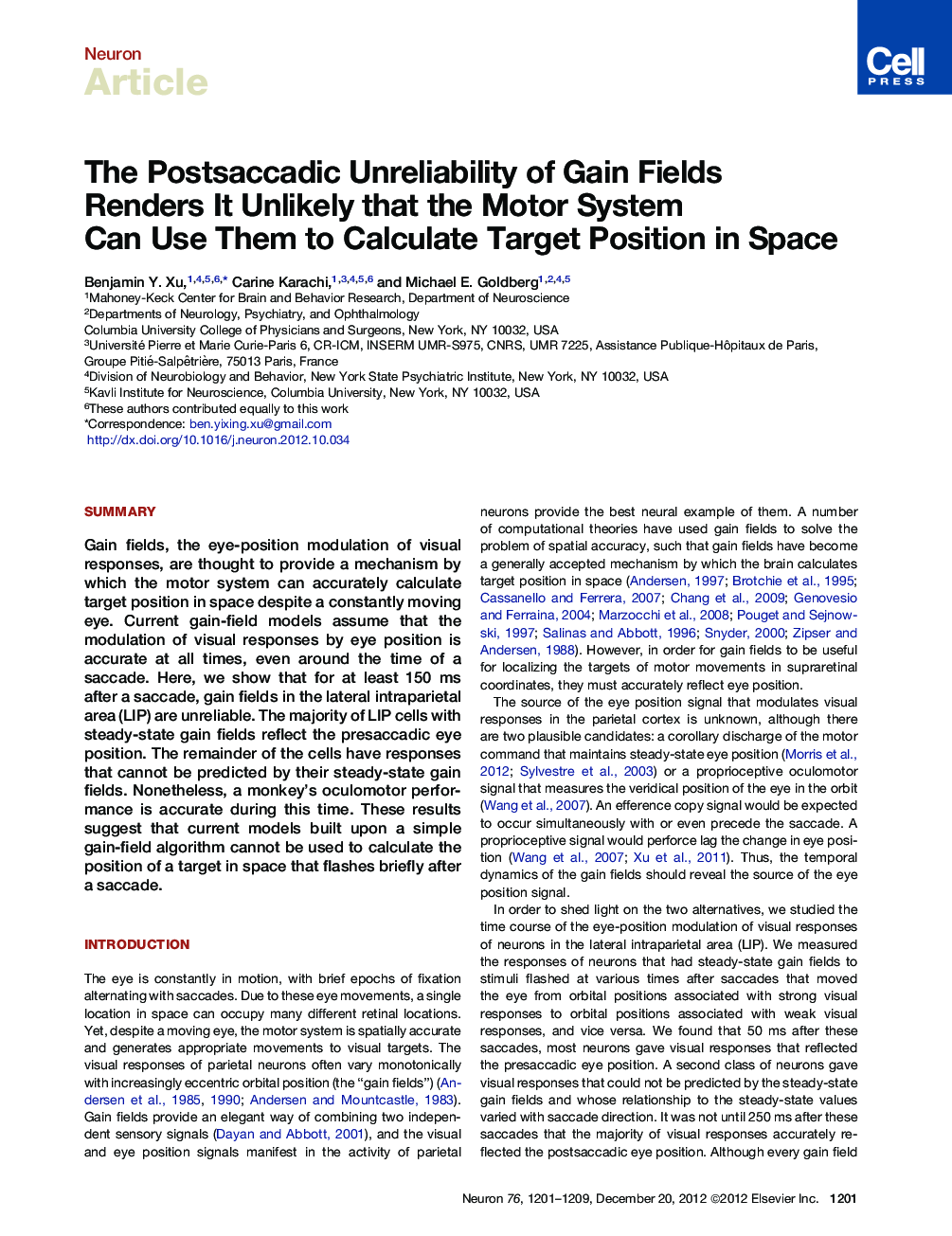| Article ID | Journal | Published Year | Pages | File Type |
|---|---|---|---|---|
| 4321226 | Neuron | 2012 | 9 Pages |
SummaryGain fields, the eye-position modulation of visual responses, are thought to provide a mechanism by which the motor system can accurately calculate target position in space despite a constantly moving eye. Current gain-field models assume that the modulation of visual responses by eye position is accurate at all times, even around the time of a saccade. Here, we show that for at least 150 ms after a saccade, gain fields in the lateral intraparietal area (LIP) are unreliable. The majority of LIP cells with steady-state gain fields reflect the presaccadic eye position. The remainder of the cells have responses that cannot be predicted by their steady-state gain fields. Nonetheless, a monkey’s oculomotor performance is accurate during this time. These results suggest that current models built upon a simple gain-field algorithm cannot be used to calculate the position of a target in space that flashes briefly after a saccade.
► 150 ms after a saccade, 2/3 of LIP responses reflect the presaccadic eye position ► The other 1/3 of LIP responses cannot be predicted by the steady-state gain fields ► The monkeys’ behavior to visual stimuli presented during this period is accurate ► Steady-state gain-field models cannot explain how the brain calculates target position
